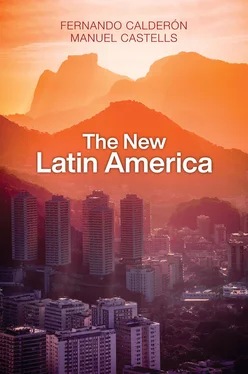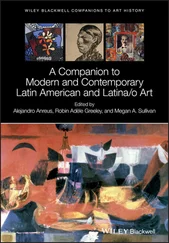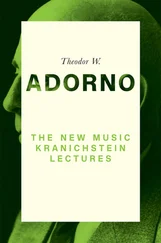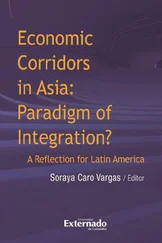The new social movements in Latin America, like those emerging elsewhere, can only be understood in the context of a widespread crisis of legitimacy affecting social institutions, a crisis that we document and analyze in this book. Political parties, parliaments, governments, courts of justice, police forces, financial institutions, mainstream media outlets: all are distrusted by a large majority of citizens (83 percent in Latin America as a whole in 2019, according to the United Nations Development Program). Implicated in this collapse of moral authority is the Catholic Church, whose demise we study in this book. This demise has left an empty space in the lives of many in Latin America, depriving people of a place of psychological refuge that helped them to endure the harsh reality of existence. This space is now being filled by a myriad of unscrupulous Evangelical churches that generally are the main support for reactionary demands for “law and order” that can pave the way for authoritarian rule.
At the heart of this widespread crisis of legitimacy is state corruption, a decisive feature of almost all Latin American countries. Denunciations of corruption recur and even predominate in all recent mobilizations in the region, indicating a deep distrust of the institutions responsible for managing people’s lives. A factor in the increasing state corruption is the relentless expansion of the criminal economy, whose causes and consequences are covered in detail in chapter 3. But the corruption extends beyond the pervasive presence of criminal elements. It is rooted in the systemic illegal financing of political parties; it derives from the role of the Latin American states in connecting global networks with local networks in the new economy. And it is related to the importance of public markets as sources of capital accumulation for oligopolistic companies ready to buy presidents and other politicians, because of profitable investments in infrastructure linked to modernization projects, and to the chaotic urbanization of Latin America. A paradigmatic case concerns the Brazilian multinational Odebrecht, responsible for corruption of political leaders in Brazil, Peru, Ecuador, Chile, and Mexico, among other countries. The causes and effects of state corruption are the themes of the penultimate chapter of our book. This corruption underlies the collapse of public institutions and ultimately the social explosions taking place throughout the region.
There was, however, one development that we did not foresee: the return of the military as a political actor. Because of our empirical knowledge of the new make-up of the armed forces in different countries, we thought that the military had learned the lessons of past criminal adventures and had surrendered power to the political authorities in exchange for legitimacy, as well as, in some cases, favorable treatment in shady deals. The case of the military coup or conspiracy against Evo Morales in Bolivia shows that we were wrong. Something similar may also happen in Venezuela, itself a military dictatorship. Probably our naïve belief in the stability of elected governments was based on the waning of US interventionism during the Obama administration, something that was reversed by Trump. Moreover, “Brazilian sub-imperialism” is now at work, with Bolsonaro playing the role of chief conspirator on behalf of the Latin American elites who feel threatened in their domination. If this dark hypothesis is verified, this will add another sinister touch to our already gloomy conclusion in this volume, where we discuss the spread of the kamanchaka in most of Latin America. (On the meaning of the word, consult our final chapter in this volume.) However, our last word in the book refers to “the color of hope,” to the social movements, mainly supported by youth, women, environmentalists, and indigenous peoples, that might reconstruct life from the ground up. This process has indeed started, as we foresaw it would. But if social explosions overtake social movements, then such outrage may or may not open the path to hope. Saying “enough” to violence, and to repression entails understanding that social life – regardless of political, ideological, cultural, or economic affiliations – can only be balanced through the acknowledgment of social pluralism and the unequivocal defense of human rights, dignity, and diversity. The elements for understanding future developments in Latin America are the subject of this volume, which is rooted in the observation of the recent past.
F.C. and M.C.
January 2020
INTRODUCTION: THE NEW LATIN AMERICA
At the dawn of the third millennium of the Common Era, Latin America and its people have experienced a profound transformation. The region has been fully integrated into globalization, which dominates both the world economy and world culture. This does not mean, however, that everything or everyone in Latin America has been integrated into this global process, because globalization, operating at a planetary scale, is both inclusive and exclusive. It simultaneously involves selective incorporation and structural marginalization, as we have argued elsewhere (Calderón, 2003). In a context of technological and informational revolution, the restructuring of Latin America has entailed a profound modernization of the processes of production and corporate management necessary to compete in global markets for goods, services, and capital. A new model of production – informational extractivism – has become central to many Latin American economies and to the largest of these economies in particular. Technological modernization has rapidly expanded into the realms of communication and culture, globalizing the media and leading to the diffusion of internet networks, which have become vectors for the transformation of culture and everyday life for new generations. At the same time, and as in the rest of the world, globalization and digitization have not produced a homogeneous global culture or relegated the diverse cultures produced by human experience to the dustbin of history, where they would await gradual destruction. The ideology that defines modernization as a vector of cultural domination has thus been disproven again. In fact, the opposite has occurred. From the depths of the souls of Latin American people, a constellation of identities has forcefully reemerged. These were created in the context of an everyday life that has never been fully subjugated and that retains a character of its own, allowing for the survival of an oral tradition and giving rise to a specific form of life. This form of life is human, to be sure – more human, even, than the standards of behavior implicit in the market as a form of life and not only an economy. But it is made up of practices rooted in secular sharing, fraught with sufferings and hopes. Indigenous peoples have thus asserted themselves except in those lands where genocide has led to their extermination. But so, too, have other identities, regional, local, and religious, except in the case of the dominant religion of the region, Catholicism, whose crisis we will consider in this book, investigating both its causes and its consequences.
New identities have likewise emerged as result of a complex process of transformation that has challenged the patriarchy, which is at the root of an institutional domination that has lasted for millennia. Women, feminists, lesbians, gays, transgender people, and bisexuals have all affirmed their right to love and to be loved by anyone they want, setting aside the dictates of sexual repression. And alongside these personal identities, new ways of relating nature and culture have emerged, giving rise to the recognition of animals as our companion species. A systematic questioning of the dark side of institutionally imposed culture has also taken place.
Читать дальше












